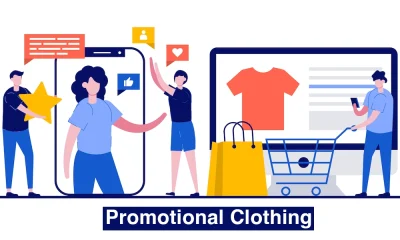Marketing
The Anatomy of Shareable Content

Shareable content is one of the big guns you can ever gear up with as a marketer.
Put simply: the more shares your content gets, the more effective your marketing campaigns will be.
It will increase your brand’s value, reach a wider audience, convince more leads, and more.
The tricky part is, creating shareable content isn’t always easy. Even some of the best content writers can rack their brains for hours to produce it.
In this post, let’s dissect the anatomy of perfect, shareable content. With this knowledge, you can create content that really wows!
What makes content A+ quality?
Think of your content as your online brand’s lifeblood. It’s indispensable – and you’ll have nothing without it.
And just like the majority of marketers, you should treat it as your asset. As it powers you up, it’s also the fuel you need to go far.
What makes content so good, you ask?
To make it simple for you, great content must:
- Be readable. Users don’t really care about the number of words in your vocabulary. They just care about the value that your content can give.
- Solve a problem. Your content should be able to help readers accomplish their goals. Otherwise, they’ll be disappointed, and you’ll just be another site they’ll easily forget.
- Have images. Use infographics, stock photos, screenshots, and other visual aids. Your site needs to be more visible in social media feeds.
Without further delay, let’s take a look at the content elements that make content shareable:
1. Striking Visuals
Great content is not just about written text. It’s about the entire experience your readers can get as a package.
Canva is one of the tools you can use to create covers and featured images for social media. It’s easy and free!
On its website, just choose a template. You can download and publish your design in seconds after adding photos, text, and other elements.
Given the classic saying that goes “don’t judge a book by its cover”, you might assume this advice is trivial, but in the world of marketing, it’s actually practical.
If your article looks terrible at first glance, what makes you think visitors will be inspired to read it?
There are, after all, thousands – if not millions – of similar articles on the web.
Maybe there’s good in your work if they “dig deep” and actually read it. However, first, the article needs to look good. So, be competitive and work on your content’s visual appeal.
Aside from adding images, here’s what you can do:
- No walls of text. Break down your article into easy-to-read paragraphs. About 3 sentences per paragraph will do.
- Use complementary colors. Don’t go with contrasting colors that don’t blend well together. If you want to spice things up with visual elements, like CTA buttons or pop-up forms, refer to this color guide.
- Establish a visual hierarchy. Using larger fonts to improve readability is a given. Another thing you can do is to use subheadings, line separators, bulleted lists, and other formatting options to make key information easier to find.
2. Engagement Value
If your readers would yawn at the first few words of your work, it’s probably not shareable – plain and simple.
For your audience to want to share your work, you need to get them interested in you and your business.
The trick to making this happen is you need to be on their side, knowing what your customers want and often before they know they need it!
The solution? Don’t publish textbook-quality articles. Make all your content relatable.
How to connect on a more relatable level
Connect with your audience emotionally and make them smile, cry, frustrated, and more. The idea is to find out what makes your audience tick and go from there.
Here are a few tips to get your content to connect with readers.
Be relatable
Talk about the pain points that your target readers have. Tell a story on how you have the same problem and establish that you’ve found a solution.
Likability Matters
Your writing voice is a critical factor that influences if readers will like your content or not. Most bloggers utilize a friendly, conversational writing style to get readers emotionally invested in a piece.
Don’t take too long to make a point
A little storytelling in your introduction is a good starting point, but be sure to quickly get to the good stuff. Keep sentences short and let your readers know what the article will cover to keep readers from exiting after a few seconds.
Dish out actionable information
One of the main reasons why people check out online content is to get something done. Help them with this by loading up your articles with step-by-step information.
3. Influencer “Trails”
Famous people are great to have around. They can also lend you their authority to make your readers more enthusiastic.
Some influencers already have a following of hundreds of thousands of people on social media. Other than their reach, you can also leverage their credibility to generate more shares.
An influencer’s name alone can garner tons of clicks. Many of these influencers’ fans track their online activities.
Wherever their names pop up, they’ll go.
One way to play this out is to write a list post that features influencers. You can ask the influencers to chip in their opinion or advice on a particular topic and invite them to share the finished product.
Ego bait
You can also invite influencers to an interview and feature it on your blog. This is a huge win when the influencer’s fans visit your blog.
While this activity is an example of “ego bait” content, it works by rewarding you with site traffic and also high-quality backlinks.
Find Influencers
However, before you get too excited, you need to look for potential influencers first. Fortunately, this is actually easy to do. Why?
There are two reasons finding influencers isn’t that hard:
- There is a sea of online influencers out there. Influencers in the industries of marketing, health, tech, travel, and more are all over the internet. On Instagram alone, 3.1 billion is the combined following of the top influencers.
- Tools like BuzzSumo exist. With a single keyword, you can use BuzzSumo to look for key influencers in a flash. All you need to do is use a topic as a search term, and then a list of relevant influencers will be presented to you.
4. A Catchy Headline
Don’t be surprised that people’s attention spans seem to be dropping in this day and age.
Instant gratification is what your site competes with, so your content’s headline must be a winner to get eyeballs.
Statistics show that only 4 out of 10 people will check out your entire content. This means the majority of your traffic will only focus on the key takeaway presented in your headline.
It’s undeniably troubling, but that comes with a silver lining for online marketers and bloggers.
Craft intriguing, thought-provoking headlines, and you can convince readers to read your content through to the end.
Plus, do an outstanding job with your content, and your readers will share your posts on social media – assuming, of course, the actual content lived up to their expectations.
To produce eye-catching headlines, read this article. There is a psychology to getting readers attention.
With it, you can write powerful headlines that can turn readers’ heads. Just enter a proposed title, and the tool will give it a score.
Consider the following improvements on your headline across four fronts:
- Word balance – A great headline has the right mix of uncommon, common, emotional, and power words. Headline Analyzer will tell you how to strike the perfect word balance.
- Headline type – The tool warns you if your headline is too generic. To make it intriguing, try to write a “how-to” headline, question headline, or list post headline.
- Length – If your headline is too long, it may get truncated when viewed on search engines and social media feeds. Headline Analyzer recommends keeping your headline within 55 characters to be engaging.
- Keyword optimization – For SEO purposes, Headline Analyzer will try to assess the focus keyword of your headline. Use the tool to make sure your content will reach the right audience.
5. Easy-To-Use Sharing Elements
Just like you need to craft catchy headlines, you also need to make it easy for your readers to share your content.
Nowadays, people like to take it easy. If something stresses them out, off to another option they go.
That’s why posts like this one from SEMrush use these floating social media icons:
The good thing is, integrating convenient sharing buttons on your content is as easy as installing a plugin.
ShareThis will help you get your hands on those sharing buttons. All you have to do is select a button type, specify your CMS platform, and set up your account to generate a ready-to-use code.
Conclusion
So that’s it – these are the elements that make content shareable.
Just incorporate them into your content strategy, and you’ll be raking in social media traffic in no time.
Do you think we missed an essential element that boosts shareability? If so contact us on Facebook or our Linkedin group.






